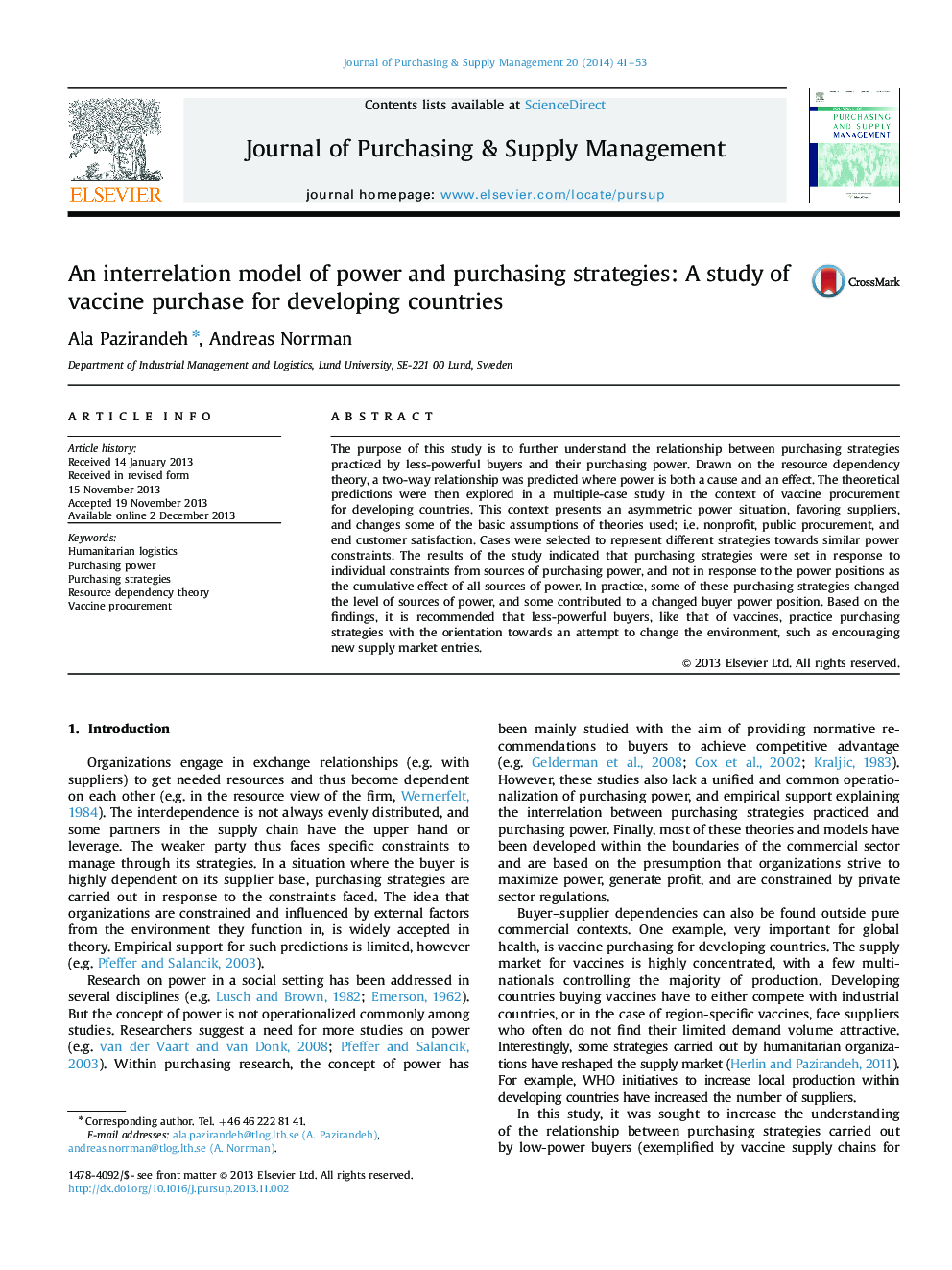| Article ID | Journal | Published Year | Pages | File Type |
|---|---|---|---|---|
| 1020759 | Journal of Purchasing and Supply Management | 2014 | 13 Pages |
•The relation between purchasing strategies and purchasing power positions was investigated.•We studied five less-powerful cases purchasing vaccines for developing countries.•Buyers chose their purchasing strategies in response to constraints from sources of power.•In practice, some of these purchasing strategies changed the level of sources of power, and some contributed to a changed buyer power position.
The purpose of this study is to further understand the relationship between purchasing strategies practiced by less-powerful buyers and their purchasing power. Drawn on the resource dependency theory, a two-way relationship was predicted where power is both a cause and an effect. The theoretical predictions were then explored in a multiple-case study in the context of vaccine procurement for developing countries. This context presents an asymmetric power situation, favoring suppliers, and changes some of the basic assumptions of theories used; i.e. nonprofit, public procurement, and end customer satisfaction. Cases were selected to represent different strategies towards similar power constraints. The results of the study indicated that purchasing strategies were set in response to individual constraints from sources of purchasing power, and not in response to the power positions as the cumulative effect of all sources of power. In practice, some of these purchasing strategies changed the level of sources of power, and some contributed to a changed buyer power position. Based on the findings, it is recommended that less-powerful buyers, like that of vaccines, practice purchasing strategies with the orientation towards an attempt to change the environment, such as encouraging new supply market entries.
